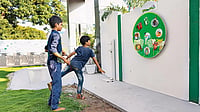Claudia Rutt, the CFO of DATRI Blood Stem Cell Donors Registry, speaks with Jeevan Prakash Sharma on the challenges registries face in India.
Why do you charge Rs 8 lakh to Rs 10 lakh when donation comes voluntarily and free?
The donation by the donor is free of cost. However, the entire process is not. Chances of finding a match are 1:10,000 to 1:1 million. There are more than 2,600 patients in our base waiting for a match. So if we have to recruit 10,000 donors for a match and each HLA typing costs us Rs 1,800 (reduced rate offered by Histogenetics to DATRI), then the cost of donors recruited equals to Rs 1,800 multiplied by 10,000. Add the cost of medical tests of donors prior to donation, his/her travel and stay; the cost of GCSF injections and the cost of collection in a hospital. These costs do not include administrative expenses of running an organisation like DATRI. It is a not-for-profit and does not have government funding. The costs are covered either by CSR funding or by charging the patient.
ALSO READ: A Second Shot At Life
How to make stem cell transplant affordable in India?
The cost of stem cell transplant can be divided into three components: hospital expenses, cost of medicines and cost of unrelated donors. In all three, the government and trusts can subsidise the cost. There are people who support cancer patients. However, these should be under one roof. Many governments give money to poor patients. These schemes should be widely known and the money disbursed on time. The cost of registries can be subsidised by the government or companies. That would help spread awareness and cut down cost.
How many people have registered as donor in India?
DATRI has 4.8 lakh donors, less than one per cent of India’s population. There are myths and misapprehensions regarding blood stem cell donation that need to be addressed. Awareness levels are low, especially in tiers 2 and 3 towns. In India, there are people who influence the decision of a donor. We not only have to educate the donor, but their families, friends, relatives as well. This is a tall order. The road is long and difficult. We have the will and the confidence to persevere.
ALSO READ: Saved By Your Stem Cell
What will make people step forward and register as donors?
The donation has to be voluntary. Even if registration is incentivised, the donor should be ready to donate his stem cell when a match is found. If the donor backs out, it is as worse as taking away a plate of food from a starving person. Donors should understand that a few hours of their time is giving life to another person.
Is there a need to regulate stem cell donation?
Registries started in most nations without a law. In most countries, regulation comes later. In some countries there are rules, in others there are regulations, and some have recommendations. It would be good to have some guidelines, even if there are no laws. We need some standards defined. DATRI had initiated a meeting of registries a couple of years ago, but it did not evolve as it was envisaged.
There is no coordination between stem cell registries in India. They function as rivals. Why?
To have some competition is good for the cause. So long as the registries communicate openly and learn from each other’s best practices. A monopoly is not good for a country like India. The registries should be friends. We are all working towards finding a donor for a patient.
Will setting up a national registry help?
It would make sense to bring the registries together, define standards and work together. It can function as a coordinated hub and optimise the search for a donor. Several European nations have government registries, but the UK and the US have private ones, with some state support. Anthony Nolan in the UK is the planet’s oldest registry.


























